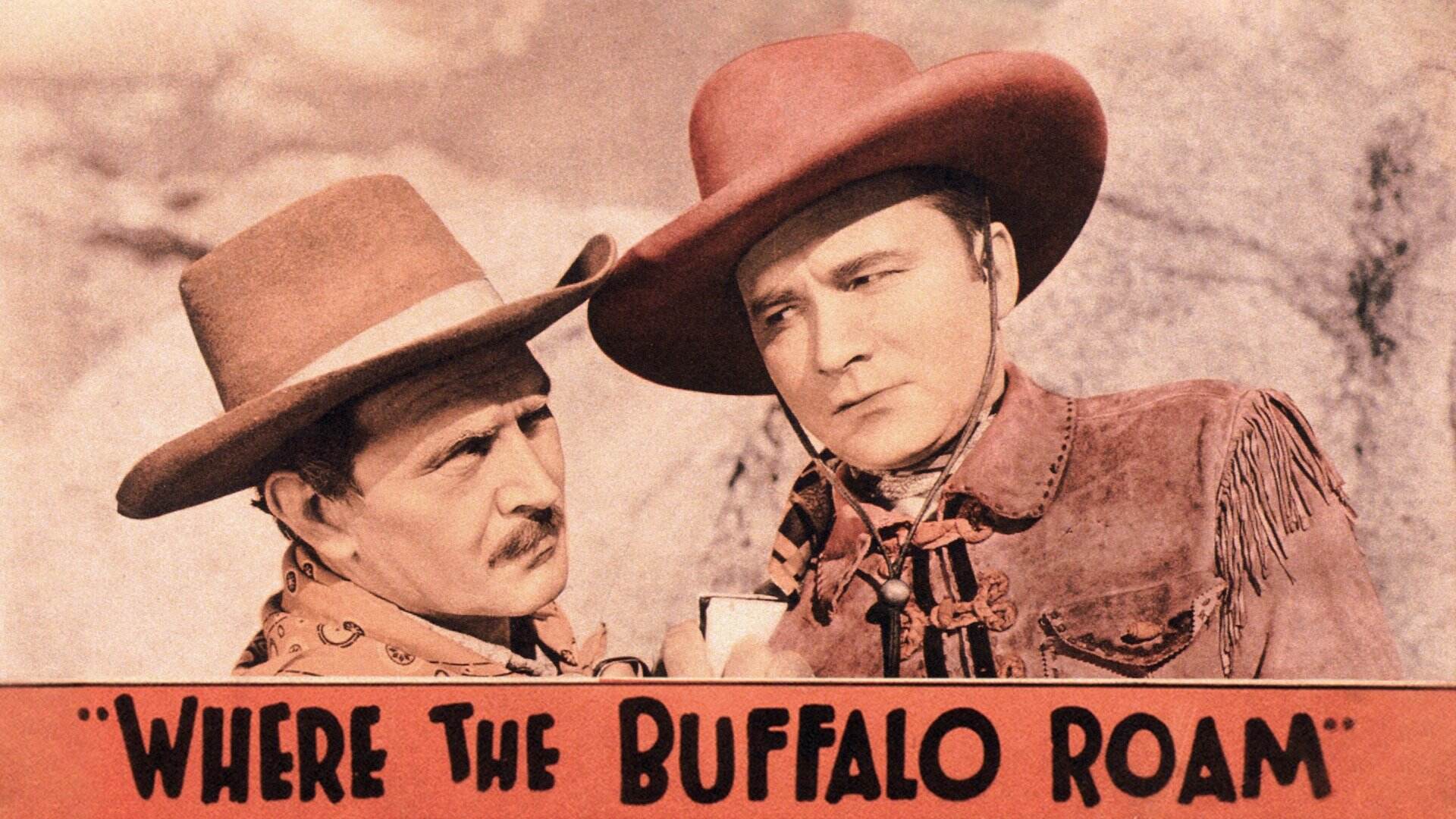
“Where the Buffalo Roam” is a classic movie that has garnered a loyal following and captivated audiences since its release. Directed by Art Linson and starring the incomparable Bill Murray, this film offers a unique and entertaining portrayal of the legendary journalist Hunter S. Thompson. With its offbeat humor, larger-than-life characters, and gripping storyline, “Where the Buffalo Roam” remains a beloved and iconic piece of cinematic history. In this article, we will delve into 47 fascinating facts about the making of this cult classic. From the wild anecdotes behind the scenes to the real-life inspirations behind the characters, get ready to dive into the world of “Where the Buffalo Roam” and discover the intriguing trivia that surrounds this cinematic gem.
Key Takeaways:
- “Where the Buffalo Roam” is a quirky movie about the wild life of journalist Hunter S. Thompson, featuring Bill Murray’s hilarious portrayal and Neil Young’s awesome soundtrack.
- The film captures Thompson’s unconventional journalism, turbulent relationships, and love for motorcycles, making it a cult favorite among fans of his unique and influential writing style.
The movie was released in 1980.
Directed by Art Linson, the film introduced audiences to the larger-than-life character of Hunter S. Thompson and his unique brand of chaotic journalism.
“Where the Buffalo Roam” is based on Hunter S. Thompson’s writings.
The film draws inspiration from Thompson’s own writings, specifically his novel “Fear and Loathing in Las Vegas” and his essay collection “The Great Shark Hunt: Strange Tales from a Strange Time.
Bill Murray portrays Hunter S. Thompson.
Murray’s portrayal of Thompson captured the essence of the eccentric journalist, showcasing his idiosyncrasies and larger-than-life personality.
Peter Boyle plays Carl Lazlo, Thompson’s attorney and close friend.
Boyle’s performance as Carl Lazlo adds a comedic touch to the film, as the character provides a foil to Thompson’s unpredictable nature.
The film follows Thompson’s adventures in the 1960s and 1970s.
Where the Buffalo Roam” chronicles Thompson’s experiences during the counterculture movement, the Vietnam War, and political events of the time.
The film features Thompson’s iconic writing style.
The screenplay incorporates Thompson’s distinct writing style, blending fact and fiction to create a unique narrative.
The movie showcases Thompson’s unconventional approach to journalism.
Thompson’s unorthodox methods, such as immersing himself in the stories he covered and using drugs as part of his research, are depicted in the film.
Neil Young composed the film’s soundtrack.
The legendary musician Neil Young contributed original music to the film, adding to its authentic 1960s and 1970s vibe.
The film was not a commercial success.
Despite its cult following, “Where the Buffalo Roam” did not perform well at the box office, but it has gained recognition over the years for its portrayal of Thompson’s life.
The film captures Thompson’s unique sense of humor.
“Where the Buffalo Roam” showcases Thompson’s witty and irreverent humor, which became synonymous with his writing and public persona.
The movie explores Thompson’s relationship with his editor.
The film delves into the complex dynamic between Thompson and his editor, played by Bruno Kirby, highlighting the challenges and successes of their working relationship.
Murray and Thompson became friends during the making of the film.
Bill Murray and Hunter S. Thompson formed a close bond during the production of “Where the Buffalo Roam,” which continued beyond the film’s release.
The film’s title is derived from Thompson’s quote.
The phrase “Where the Buffalo Roam” comes from Thompson’s famous quote: “When the going gets weird, the weird turn pro.
“Where the Buffalo Roam” remains a cult classic.
The film has garnered a dedicated following over the years, with fans appreciating its portrayal of Thompson’s unconventional life and fearless approach to journalism.
The movie combines comedy and drama.
“Where the Buffalo Roam” strikes a balance between comedic moments and more serious themes, reflecting the complexities of Thompson’s life and work.
The film showcases Thompson’s love for motorcycles.
Thompson’s passion for motorcycles, particularly his beloved Harley-Davidson, is featured prominently in the movie.
“Where the Buffalo Roam” was Thompson’s favorite movie adaptation of his work.
Of all the film adaptations of his writings, Thompson reportedly considered “Where the Buffalo Roam” the closest to capturing his unique perspective.
The movie explores Thompson’s political activism.
Where the Buffalo Roam” delves into Thompson’s involvement in political campaigns and his critique of the American political system.
The film includes animated sequences.
To capture the essence of Thompson’s gonzo journalism, “Where the Buffalo Roam” incorporates animated sequences that bring his words to life.
The film is a blend of fact and fiction.
Where the Buffalo Roam” takes artistic liberties with the events depicted, blending real-life experiences with fictionalized elements to create a compelling narrative.
Murray improvised many of his lines.
Bill Murray brought his comedic talents to the role, often improvising lines to enhance the humorous aspects of the film.
The movie was not universally praised by critics.
While some critics lauded Murray’s performance, others felt the film failed to capture the essence of Thompson’s writing and persona.
The film explores Thompson’s struggle with alcohol and drug addiction.
“Where the Buffalo Roam” touches on Thompson’s battle with substance abuse and how it influenced his work and personal life.
The movie features Thompson’s encounters with famous figures.
Thompson’s interactions with prominent individuals such as Richard Nixon and Ed Muskie are portrayed in the film, showcasing his unique access to political circles.
The film depicts Thompson’s coverage of the Super Bowl.
“Where the Buffalo Roam” includes a memorable scene where Thompson provides unconventional commentary during his coverage of the Super Bowl.
The movie captures the turbulent era of the 1960s and 1970s.
“Where the Buffalo Roam” immerses viewers in the cultural and political upheaval of the time, reflecting the era’s social unrest.
Thompson approved of Bill Murray’s performance.
Hunter S. Thompson praised Bill Murray’s portrayal of him in “Where the Buffalo Roam,” commending his ability to capture his mannerisms and spirit.
The film serves as a snapshot of Thompson’s legacy.
“Where the Buffalo Roam” provides a glimpse into the life and legacy of one of the most influential journalists of his time, encapsulating Thompson’s impact on American journalism and counterculture.
The movie emphasizes Thompson’s fascination with guns.
Thompson’s infatuation with firearms is explored in the film, showcasing his love for shooting and the role it played in his persona.
“Where the Buffalo Roam” captures Thompson’s turbulent romantic relationships.
The film touches on Thompson’s tumultuous love life, depicting his relationships with women and the impact they had on his work.
The film’s costume design reflects Thompson’s iconic style.
The costumes in “Where the Buffalo Roam” were designed to mirror Thompson’s eccentric fashion choices, including his signature bucket hat and Hawaiian shirts.
The movie explores Thompson’s dissatisfaction with mainstream media.
“Where the Buffalo Roam” delves into Thompson’s disdain for traditional journalism and his desire to challenge the established norms of the media industry.
The film features memorable quotes from Thompson’s writings.
“Where the Buffalo Roam” incorporates iconic lines from Thompson’s works, ensuring that his distinctive voice shines through in the movie.
The movie captures Thompson’s love-hate relationship with politicians.
Thompson’s complex relationship with political figures is showcased in the film, highlighting his mixture of admiration and skepticism toward those in power.
The film explores Thompson’s fascination with hallucinogenic drugs.
“Where the Buffalo Roam” depicts Thompson’s experimentation with drugs such as LSD, portraying their influence on his writing and outlook on life.
The movie showcases Thompson’s involvement in the campaign trail.
Thompson’s experiences covering political campaigns, notably the 1972 presidential election, are portrayed in “Where the Buffalo Roam,” offering a behind-the-scenes look at his unconventional reporting methods.
The film captures the essence of Thompson’s writing process.
“Where the Buffalo Roam” provides insights into Thompson’s unorthodox writing routines, showing how chaos and spontaneity fueled his creativity.
The movie explores Thompson’s experiences as a writer and his aspirations for his work.
Thompson’s desire to create meaningful and impactful journalism is a central theme in “Where the Buffalo Roam,” showcasing his constant pursuit of truth and his unique approach to storytelling.
The film showcases Thompson’s love for music.
Where the Buffalo Roam” incorporates Thompson’s passion for music, featuring iconic tracks from the 1960s and 1970s that reflect the spirit of the era.
The movie sheds light on Thompson’s inner struggle.
“Where the Buffalo Roam” delves into Thompson’s inner demons and the internal conflicts that shaped his writing and personal life.
The film serves as a tribute to Thompson’s impact on American culture.
“Where the Buffalo Roam” pays homage to Thompson’s enduring influence on American literature, journalism, and counterculture, highlighting his unique role in shaping the landscape of the 20th century.
The movie showcases Thompson’s involvement in the drug culture of the time.
Thompson’s immersion in the drug culture of the 1960s and 1970s is depicted in “Where the Buffalo Roam,” exploring the impact of drug use on his life and work.
The film captures the essence of Thompson’s friendship with Oscar Zeta Acosta.
Oscar Zeta Acosta, Thompson’s attorney and close friend, is a central figure in “Where the Buffalo Roam,” showcasing their unique bond and shared adventures.
The movie highlights Thompson’s commitment to honesty in journalism.
“Where the Buffalo Roam” emphasizes Thompson’s unwavering dedication to truth and his belief in the power of unfiltered storytelling.
The film depicts Thompson’s experiences during the Nixon era.
Thompson’s observations and encounters with the Nixon administration are depicted in “Where the Buffalo Roam,” offering a satirical critique of the political climate of the time.
The movie showcases Thompson’s dedication to his craft.
“Where the Buffalo Roam” highlights Thompson’s relentless pursuit of journalistic excellence, often at the expense of his own well-being.
“Where the Buffalo Roam” remains a cult favorite among Thompson fans.
Despite its initial mixed reception, the film has gained a dedicated following over the years, with Thompson fans appreciating its attempt to capture the essence of his unique persona and literary legacy.
In conclusion, “Where the Buffalo Roam” provides an entertaining and revelatory look into the life and times of Hunter S. Thompson. With its mix of humor, drama, and social commentary, the film offers a glimpse into the mind of one of America’s most unconventional and influential writers. Whether you’re a fan of Thompson’s work or simply curious about the counterculture era, “Where the Buffalo Roam” is a must-watch film that continues to captivate audiences even today.
Conclusion
Where the Buffalo Roam is a captivating and iconic movie that has left a lasting impression on audiences. With its unique blend of humor, drama, and a fantastic performance by Bill Murray, this film has become a cult classic. The movie explores the chaotic and eccentric life of journalist Hunter S. Thompson, shedding light on his unconventional methods and wild adventures.
From the dynamic chemistry between Murray and Peter Boyle to the well-crafted script that captures Thompson’s essence, Where the Buffalo Roam is a must-watch for any fan of Thompson’s works or those interested in a gripping and entertaining biographical film. With its witty dialogue, memorable scenes, and a superb soundtrack, this movie continues to captivate audiences and serve as a reminder of Thompson’s genius.
If you haven’t watched Where the Buffalo Roam yet, it’s time to grab some popcorn and enjoy this unique cinematic experience.
FAQs
Q: Is Where the Buffalo Roam based on a true story?
A: Yes, Where the Buffalo Roam is based on the real-life experiences of journalist Hunter S. Thompson. The movie depicts his unconventional lifestyle, strange adventures, and his unique writing style.
Q: Who plays the role of Hunter S. Thompson in the film?
A: Bill Murray delivers an outstanding performance as Hunter S. Thompson in Where the Buffalo Roam. His portrayal captures the essence of Thompson’s eccentricity and unpredictability.
Q: What is the significance of the title, “Where the Buffalo Roam”?
A: The title is a metaphorical reference to Thompson’s philosophy of living life on the edge and breaking free from societal norms. It symbolizes freedom, adventure, and unpredictability.
Q: Is the film suitable for all audiences?
A: Where the Buffalo Roam is rated R due to its strong language, drug use, and adult themes. It may not be suitable for younger viewers or those sensitive to explicit content.
Q: Are there any other films or books about Hunter S. Thompson that I should check out?
A: Absolutely! If you enjoyed Where the Buffalo Roam, you should also watch Fear and Loathing in Las Vegas (1998), based on Thompson’s novel of the same name. Additionally, Thompson’s own books, such as “Fear and Loathing in Las Vegas” and “The Rum Diary,” are highly recommended for a deeper insight into his unique writing style and mindset.
Was this page helpful?
Our commitment to delivering trustworthy and engaging content is at the heart of what we do. Each fact on our site is contributed by real users like you, bringing a wealth of diverse insights and information. To ensure the highest standards of accuracy and reliability, our dedicated editors meticulously review each submission. This process guarantees that the facts we share are not only fascinating but also credible. Trust in our commitment to quality and authenticity as you explore and learn with us.


